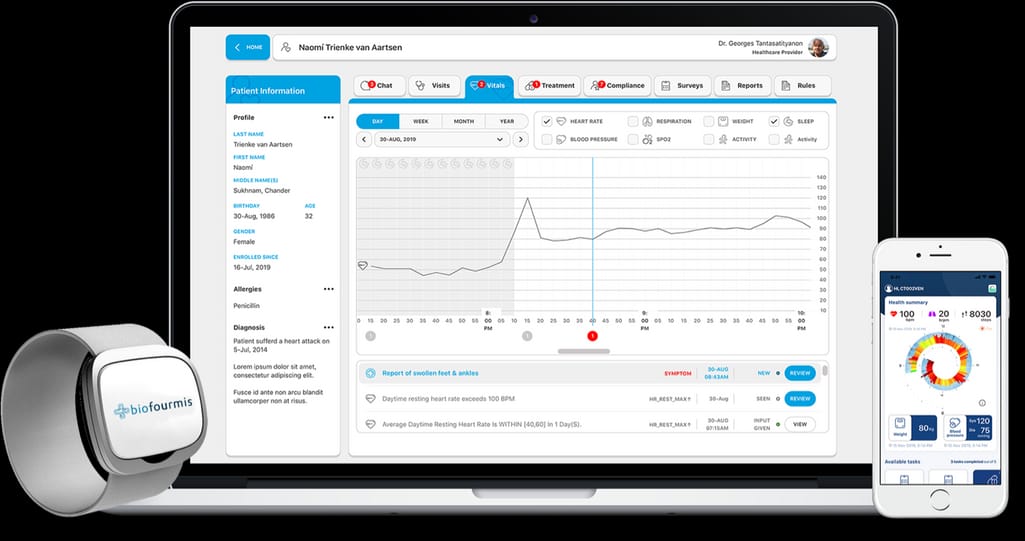Ingenious RPM Software: Transforming Patient Monitoring in Medical Care
Ingenious RPM Software: Transforming Patient Monitoring in Medical Care
Blog Article
The Future of Health Care: Remote Patient Checking Streamlined
As medical care remains to progress, one location that holds enormous pledge is remote individual tracking. The principle of streamlining this process through technical innovations is improving the method care is supplied and obtained. With a concentrate on improving individual end results and enhancing healthcare delivery, remote tracking is poised to change the sector. By discovering the benefits, technical innovations, and future trends in this field, we can obtain important understandings into the transformative potential of remote client tracking.
Advantages of Remote Client Surveillance
Remote person surveillance presents a wide variety of benefits for both medical care carriers and clients alike. Furthermore, remote client surveillance enhances the general top quality of care by offering a more holistic and extensive view of individuals' health and wellness condition beyond conventional in-person sees.
In addition, remote patient monitoring can bring about improved person results and satisfaction. Patients can delight in the ease of obtaining treatment in the convenience of their very own homes while still recognizing that their health is being carefully kept an eye on. This can cause raised individual interaction and adherence to therapy strategies, ultimately leading to much better health end results. In addition, remote surveillance can lower the requirement for frequent health center visits, lowering health care expenses for both clients and companies. On the whole, the advantages of remote individual tracking are clear, making it an important device in contemporary medical care delivery.
Modern Technology Driving Remote Tracking
In the realm of modern-day medical care, technological improvements play a crucial function in driving the evolution and performance of remote client surveillance. The integration of ingenious technologies such as wearable gadgets, mobile applications, and cloud-based platforms has revolutionized the means doctor from another location monitor and manage individual health - remote patient monitoring software. These technologies allow constant real-time monitoring of vital indicators, drug adherence, and other important health data, allowing for timely treatments and customized care plans
One secret modern technology driving remote tracking is the Web of Things (IoT), which allows smooth connectivity in between medical tools and healthcare systems. IoT tools such as smartwatches and cordless sensing units collect and transfer patient data to central systems, helping with remote surveillance from anywhere in the world. Synthetic knowledge (AI) and artificial intelligence formulas additionally boost remote surveillance by analyzing large amounts of patient information to spot patterns, forecast wellness trends, and sharp healthcare suppliers to possible concerns.
Effect on Healthcare Delivery
With the combination of sophisticated innovations driving remote person monitoring, the influence on health care shipment is becoming transformative and significantly extensive. Remote individual tracking enables health care companies to provide even more individualized click here now and aggressive care to individuals, resulting in improved health and wellness end results and More Bonuses minimized healthcare facility admissions. By remotely tracking vital signs, signs, and medication adherence, health care specialists can step in early, stopping complications and boosting the total quality of care.
Furthermore, remote monitoring boosts access to health care services, specifically for individuals in underserved or country locations. Clients can receive continuous monitoring and assistance from their homes, getting rid of the need for frequent in-person sees. This not only conserves time and minimizes prices for both clients and healthcare centers yet also lessens the risk of direct exposure to infectious conditions, an essential consideration in the current medical care landscape.
Additionally, remote client tracking allows medical care service providers to better focus on and designate sources care based upon real-time information. By identifying high-risk individuals and intervening promptly, medical care shipment becomes extra effective and reliable, inevitably causing an extra lasting and patient-centered medical care system.
Improving Person Outcomes

In addition, RPM enables positive monitoring of persistent conditions, reducing the possibility of severe worsenings and hospital readmissions. Individuals gain from raised benefit and convenience, as they can get care in their own homes while staying attached to their doctor. This continuous monitoring not just enhances person contentment but additionally cultivates a sense of empowerment and engagement in their own health and wellness monitoring.
Future Trends in Remote Surveillance
Embracing innovative modern technologies in remote client monitoring is shaping the future landscape of healthcare delivery. One considerable trend is the enhanced use of wearable devices and sensing units to accumulate real-time information, enabling medical care companies to check patients continuously without the need for constant in-person visits.

Furthermore, telehealth systems are becoming more innovative, enabling virtual examinations, remote diagnosis, and remote client monitoring done in one incorporated system (remote patient monitoring platform). This alternative strategy to remote tracking is simplifying medical care shipment, boosting client fulfillment, and ultimately, enhancing general quality of care
Final Thought
In conclusion, remote patient monitoring provides numerous advantages in medical care distribution, driven by advancements in modern technology. It has the possible to improve patient end results and revolutionize the way health care is provided. Future patterns in remote surveillance will remain to shape the landscape of healthcare, giving opportunities for even more customized and reliable patient care.
Remote client surveillance offers a plethora of advantages for both health care companies and people alike. Additionally, remote person tracking improves the general quality of care by offering an extra thorough and all natural view of patients' wellness standing beyond standard in-person brows through.
Moreover, remote individual tracking can lead to enhanced client results and satisfaction. Remote client surveillance allows healthcare service providers to supply more proactive and individualized care to clients, leading to boosted wellness outcomes and minimized hospital admissions. Remote individual monitoring (RPM) plays a considerable role in enhancing individual end results by offering continuous, real-time data that allows health care suppliers to step in without delay and adjust treatment strategies as needed.
Report this page